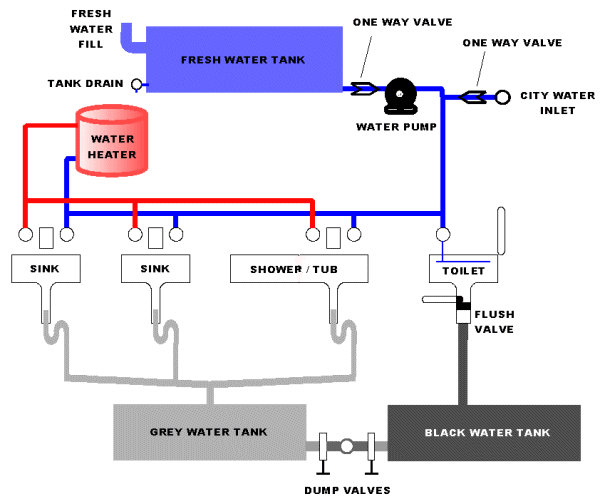What Is Flow In Plumbing?
Flow in plumbing is the movement of water through a pipe or other water-carrying conduit towards a desired destination. It is also a measure of the rate at which water flows through the conduit. Flow can be affected by the size of the pipe, the number of bends, the length of the pipe, and the pressure of the water in the pipe. Flow can be measured in gallons per minute (GPM) or cubic feet per second (CFS). It is important to have the right flow in plumbing systems to ensure that water is flowing at an optimal rate and not creating any blockages or backflow.
Definition of Flow in Plumbing
Flow in plumbing can be defined as the rate at which water flows through a pipe. It is measured in gallons per minute (GPM). It is important for all plumbing systems to have proper flow, as the incorrect flow rate can lead to issues such as clogged pipes, low water pressure, and increased risk of water contamination. Flow in plumbing is determined by the size of the pipes, the length of the pipes, and the type of material used. Additionally, the flow rate can be affected by the pressure of the water supply, the temperature of the water, and the type of valve used to regulate the flow. A professional plumber can help ensure that the flow is properly adjusted to meet the needs of the plumbing system.
Different Types of Flow in Plumbing
Flow is an important concept in plumbing and understanding the different types of flow can help you make better decisions when it comes to your plumbing system. Flow in plumbing is the movement of water from one point to another. It can be through pipes, through drains, or even through the air. The flow in plumbing is affected by the pressure of the water, the size of the pipes, and other factors.
There are two main types of flow in plumbing – turbulent and laminar. Turbulent flow is when the water is moving rapidly, creating a jumbled, chaotic motion. This type of flow is typically seen in high-pressure pipes, and it can lead to more wear and tear on pipes and fixtures. Laminar flow, on the other hand, is when the water moves in a more organized, uniform pattern. This type of flow is typically seen in low-pressure systems, and it can be beneficial for conserving energy and keeping fixtures from wearing out too quickly.
In addition to these two types of flow, there are also two other types that are less common – crossflow and reverse flow. Crossflow is when the water flows at a right angle to the direction of the pipe, while reverse flow is when the water flows in the opposite direction of the pipe. Both of these types of flow can cause problems in plumbing systems, so it’s important to be aware of them.
Understanding the different types of flow in plumbing is essential for both homeowners and professional plumbers. Knowing the different types of flow can help you make better decisions when it comes to your plumbing system and ensure that it functions properly.
Factors Affecting Flow in Plumbing
Flow in plumbing systems is the movement of water and other liquids through pipes, valves, and other components. It is the primary factor that determines the functionality of a plumbing system and the amount of water that can be supplied to a building. The flow of water in a plumbing system is determined by several factors including the size of the pipes, water pressure, and the type of fixtures installed. Knowing the factors affecting flow in plumbing can help you design an efficient, cost-effective, and safe system.
Pipe size is the most important factor in determining flow in plumbing. The larger the diameter of the pipe, the greater the flow of water. This is due to the fact that the larger the pipe, the less resistance it has to water flow. The pressure of the water also affects flow. High water pressure can increase the flow of water, while low water pressure can reduce it. The type of fixtures installed can also affect the flow of water. Some fixtures, such as showers and toilets, require a higher flow rate than others, such as sinks.
Finally, the condition of the pipes can affect the flow of water. If the pipes are clogged, corroded, or otherwise damaged, it can reduce the flow of water. Additionally, the age of the pipes can affect flow; older pipes may not be able to handle the same amount of water as newer pipes.
Understanding what factors affect flow in plumbing is essential for designing a functional and efficient plumbing system. Knowing the size of the pipes, water pressure, type of fixtures, and condition of the pipes can help you create a system that meets your needs and is cost-effective. With the right design, you can ensure that your plumbing system is efficient and reliable.

Benefits of Flow in Plumbing
Plumbing is a fundamental part of any home or business. From kitchen sinks to bathroom toilets, plumbing is essential for running water, draining wastewater, and ensuring the sanitary conditions of your property. It’s also essential to keep your plumbing system running smoothly and efficiently. One of the most important aspects of this is understanding the concept of flow in plumbing.
Flow in plumbing is the rate at which water moves through a pipe. It’s measured in gallons per minute (GPM). The higher the flow rate, the more water can be moved through the pipe and the more efficiently your plumbing system will work. Flow can be affected by factors such as pipe size, the pressure of the water source, and the length of the pipe.
Having a good flow rate in your plumbing system can bring several benefits. Firstly, it can help to reduce water wastage. A good flow rate will ensure that the water is used effectively and efficiently. Secondly, it can reduce the risk of water damage, as the water will move quickly and won’t have a chance to sit and cause damage to the pipes. Thirdly, it can help to reduce energy costs as the water will move more quickly and won’t require as much energy to move it. Finally, it can help to improve the water pressure in your plumbing system, giving you better performance.
Understanding the concept of flow in plumbing and having a good flow rate can help to ensure that your plumbing system runs effectively and efficiently. With the right flow rate, you can save energy, reduce water wastage, and keep your plumbing system running smoothly.
Challenges in Achieving Optimal Flow in Plumbing
When it comes to plumbing, flow is a crucial component for any project’s success. If the flow is not optimal, then the plumbing system won’t function properly. Unfortunately, it can be quite tricky to achieve optimal flow in plumbing. There are a number of factors that can influence it, including the size of the pipes, the type of pipes used, the water pressure, and even the shape of the pipes. All of these elements must be taken into account when designing a plumbing system.
One of the biggest challenges of achieving optimal flow in plumbing is ensuring that the water pressure is properly balanced. If the pressure is too high, the pipes may become clogged, while too low pressure can cause a lack of water flow. Additionally, difficulties can arise when working with pipes of different sizes. If the pipes are too small, the water pressure may be too high, while if the pipes are too large, the water pressure may be too low.
Another challenge is ensuring that the pipes are properly shaped. If the pipes are not curved correctly, then the water flow may be blocked. Additionally, some pipes may be more resistant to water flow than others. This can be due to the materials used in the pipes, or due to the age of the pipes. In these cases, it is important to use specialized tools to help ensure optimal flow.
Overall, while achieving optimal flow in plumbing can be quite challenging, it is essential for the success of any plumbing project. By taking into account the size of the pipes, the type of pipes used, the water pressure, and the shape of the pipes, it is possible to create a plumbing system that is both effective and efficient.
Maintenance and Troubleshooting Flow Issues in Plumbing
Flow is a crucial factor when it comes to plumbing. It refers to the amount of water that is pushed through a pipe, valve, or other plumbing component. Without the proper flow of water, it can cause all sorts of problems, from clogs to water damage. That’s why it’s so important to understand the basics of flow in plumbing, as well as how to troubleshoot and maintain plumbing systems.
When it comes to flow, it’s all about pressure. Pressure is the force that pushes water through pipes, valves, and other components, and it’s measured in pounds per square inch (psi). Higher pressure means more water is flowing, while lower pressure means less water is flowing. Plumbers need to ensure that the pressure in a plumbing system is correct, as too much or too little pressure can cause issues.
In order to maintain the flow in a plumbing system, it’s important to check for any blockages or obstructions in the pipes. If there is a blockage, it can reduce the amount of water that is flowing through the pipes. It can also create a buildup of pressure, which can lead to leaks or burst pipes. Regularly checking for blockages is essential to prevent any issues.
If there is an issue with flow in a plumbing system, troubleshooting can help to identify the problem. This can involve checking pressure levels, testing valves, or inspecting pipes for any blockages. Once the cause of the issue has been identified, it can be addressed with the right repairs or maintenance.
Overall, understanding the basics of flow in plumbing is essential for maintaining a safe and efficient system. Regularly checking for blockages and keeping an eye on pressure levels can help to prevent any issues. If there is an issue with flow, then troubleshooting can help to identify the cause. With the right maintenance and repairs, flow can be restored to a plumbing system.
FAQs About the What Is Flow In Plumbing?
Q1: What is flow in plumbing?
A1: Flow in plumbing refers to the rate at which water travels through a pipe, fixture, or appliance. The rate of flow is usually measured in gallons per minute (GPM).
Q2: How is flow rate calculated?
A2: Flow rate is calculated by measuring the pressure of the water and the diameter of the piping. The higher the pressure, the greater the flow rate will be.
Q3: What is the ideal flow rate for a home plumbing system?
A3: The ideal flow rate for a home plumbing system is 8 GPM. However, this can vary depending on the size of the home, the water pressure, and the number of fixtures and appliances in the system.
Conclusion
Flow in plumbing is an important and fundamental concept in the plumbing industry. Flow is the rate at which water passes through a pipe, and it is determined by the size of the pipe, the pressure, and the viscosity of the water. The flow rate of a plumbing system can be affected by a variety of factors, including the age of the system, the type of pipe used, and the amount of water being used. Understanding flow in plumbing systems is essential in order to ensure the proper functioning of the plumbing system.







